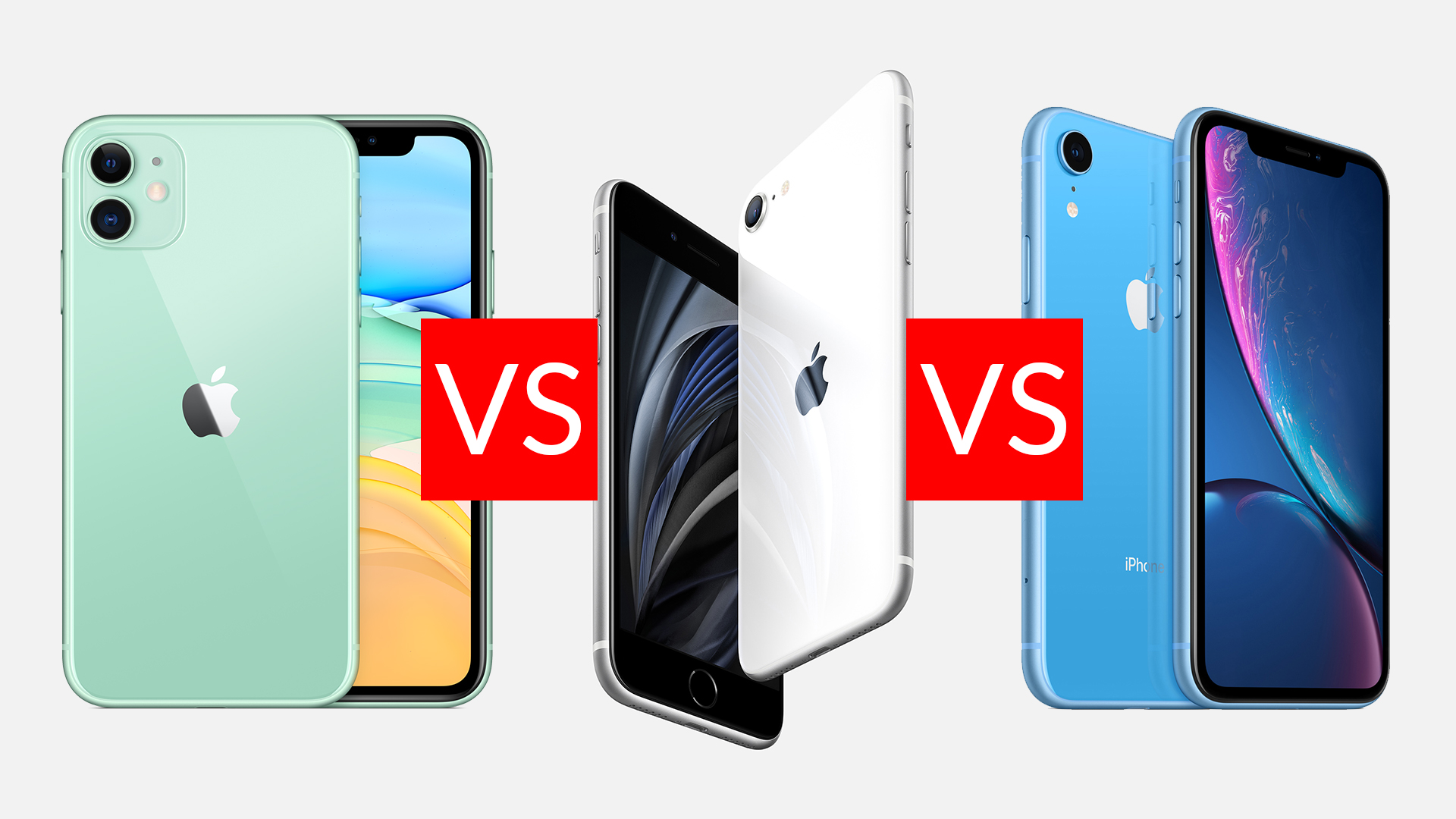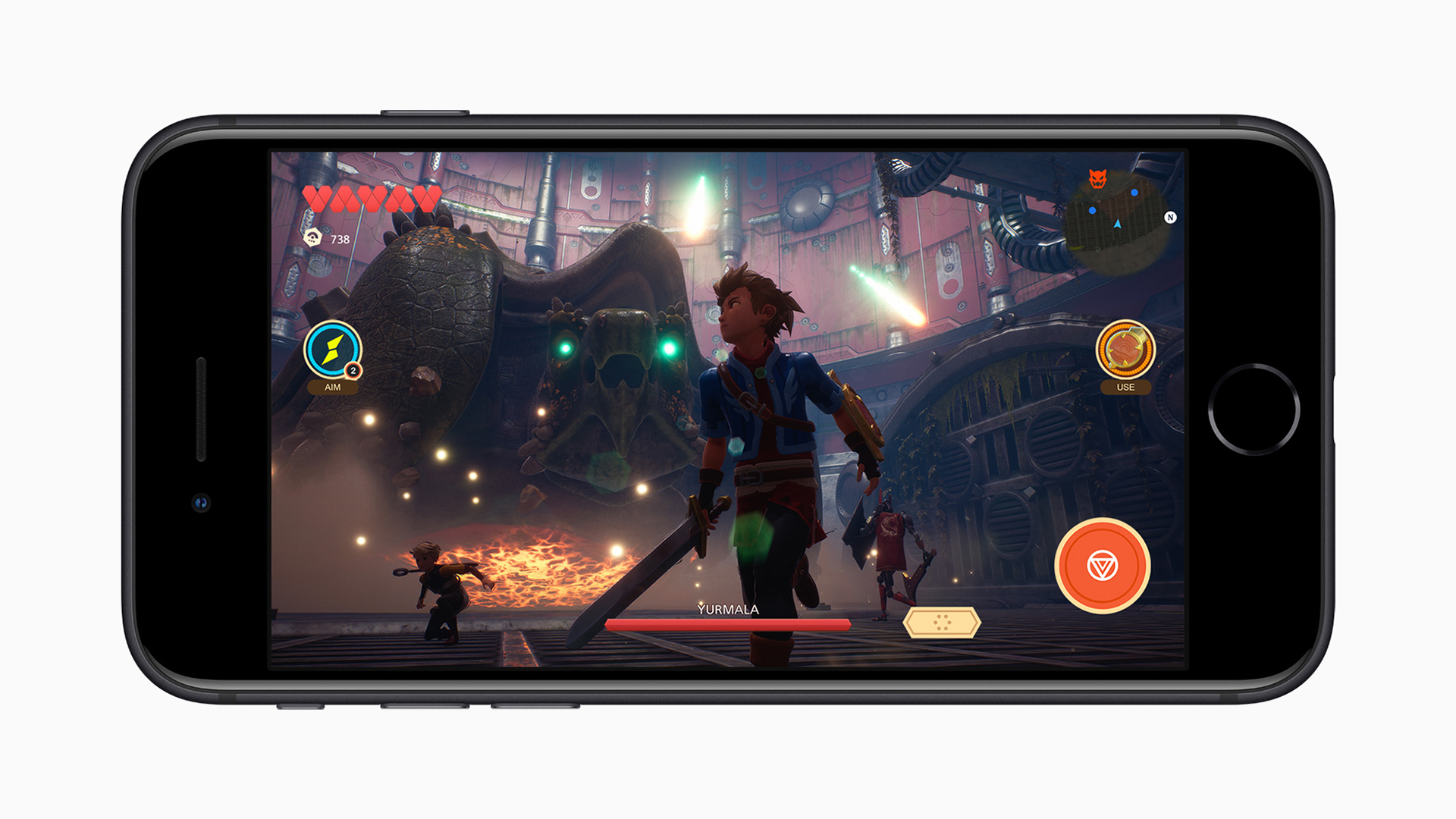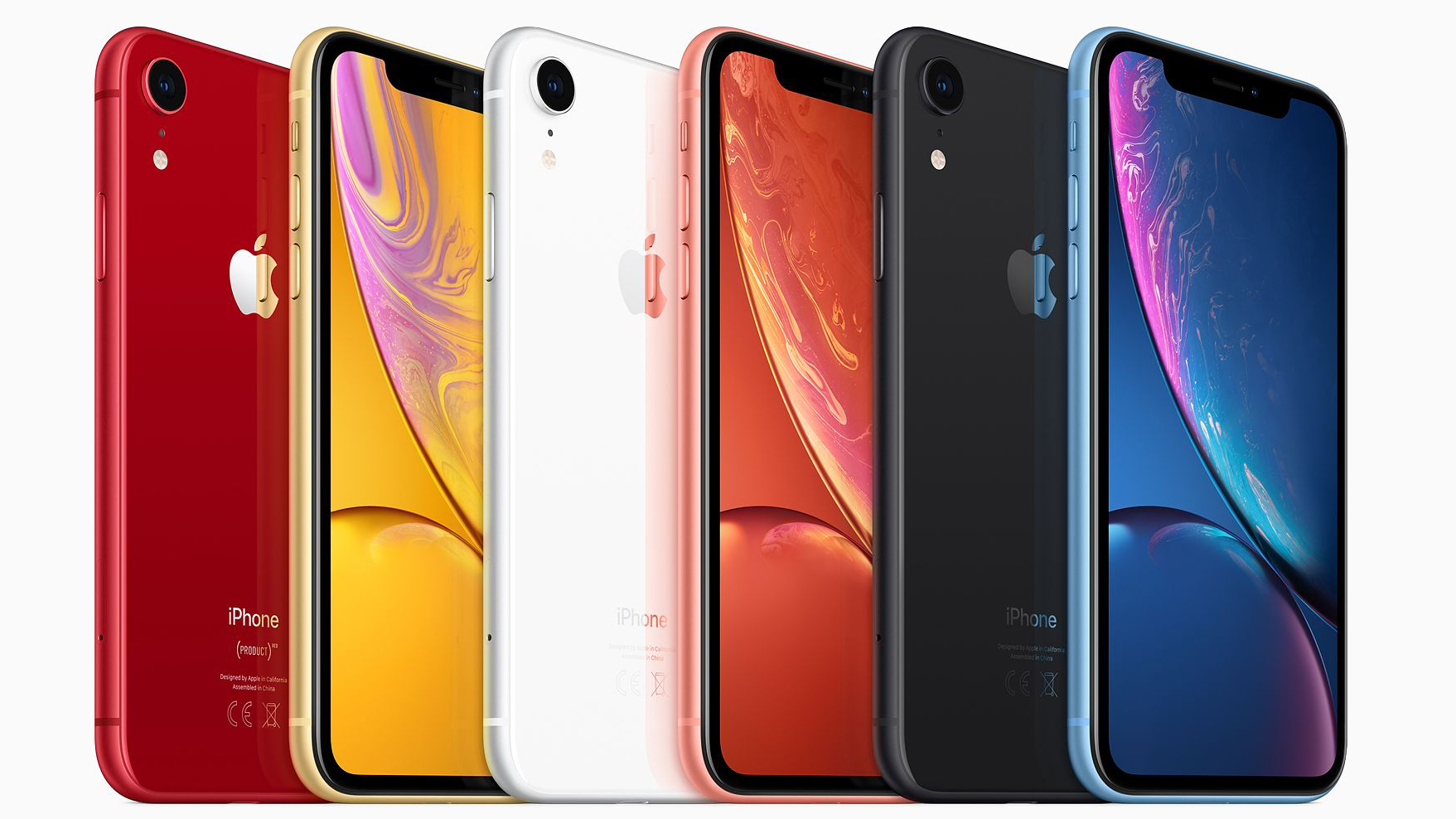iPhone SE vs iPhone 11 vs iPhone XR: which should you buy?
The new iPhone SE takes on the other cheap iPhones to help you work out which is right for you


The new iPhone SE is the cheapest iPhone you can buy right now, but it's not the only low-price iPhone – the iPhone XR and the iPhone 11 are also available.
Each of those phones steps up slightly in features, but also in price – though they're all much, much cheaper than the flagship iPhone 11 Pro.
• The iPhone SE (2020) reviews are in!
• Read our full iPhone 11 review
• Read our full iPhone 11 Pro review
If you're looking at buying a new cheaper iPhone – whether it's the iPhone SE 2020 or one of the other two options here – you're probably wondering which is right for you.
We'll take you through everything you need to know about these phones, helping you to judge the prices against the features on offer, so you end up with a phone that hits the sweet spot.
If you want a super-brief overview, though, it's this:
• Get the iPhone SE if you want the cheapest new iPhone available that will be supported with security updates for many years to come, with a great camera.
Get all the latest news, reviews, deals and buying guides on gorgeous tech, home and active products from the T3 experts
• Get the iPhone XR if you want a more modern phone design than the iPhone SE, with a bigger screen and longer battery life, and don't mind a slightly less advanced camera (due to being an older phone).
• Get the iPhone 11 if you want the modern design plus the best battery life of three, long support and the most flexible dual-lens camera with Night mode.
Want to learn more about those differences? Let's dig in.
- Order the iPhone SE (2020) at Apple UK from £419 (starts 1pm BST, 17 April)
- Order the iPhone SE (2020) at Apple US from $399 (starts 5am PDT, 17 April)
iPhone SE vs iPhone 11 vs iPhone XR: price and design
The iPhone SE starts at £419/$399, which gets you 64GB of storage – for most people, this will be enough, but you can also step up to 128GB for £469/$449 or 256GB for £569/$549. If you're a real camera fan (or like to download lots of stuff from Netflix and so on), the upgrade to 128GB is a well-priced option.
The iPhone XR starts from £629/$599, which gets you 64GB of storage. An upgrade to 128GB for £679/$649 is also available.
The iPhone 11 starts from £729/$699 for 64GB, with an upgrade to 128GB available for £779/$749, or 256GB for £879/$849.
In general, our opinion on the prices is that the iPhone XR is a little too close to the iPhone 11, which is basically a superior version of that phone. But the difference is still £100, which can't be ignored.
When it comes to design, the iPhone SE is the outlier – its design is a subtly updated version of the iPhone 8. The most significant thing about this is that it has Touch ID fingerprint unlocking, and a physical home button – the other two phones here both use Face ID face recognition, and don't have a real Home button.
The iPhone SE comes in black, white and red finishes, which is applied to the rear glass and the aluminium edges – the front is always black.
The iPhone XR has a design that more closely matches Apple's flagship phones, with an all-screen design (apart from a notch that contains the front camera and Face ID system). It's a cooler-looking design, though it's up to you whether that's actually important. It's significantly bigger than the iPhone SE, because of the much larger screen – we'll come on to the displays shortly.
The iPhone XR comes in white, black, blue, yellow, coral and red finishes – again, this applies to the glass back and the metal edges.
The iPhone 11 is essentially the same design as the iPhone XR – size and shape are the same – with the exception of the dual-lens camera array on the back. It comes in white, black, green, yellow, purple and red, though these finishes are much softer and more pastel than the iPhone XR's.

The iPhone 11's camera stands out as the only dual-lens option here, but the others have a lot to offer.
iPhone SE vs iPhone 11 vs iPhone XR: camera
The iPhone SE has what Apple calls the 'best single-camera system in an iPhone', and the list of features is certainly promising. It's a wide-angle lens (which is basically the standard smartphone lens type we're all used to) on the rear, with support for Portrait mode when shooting people, which adds blur to the background as if you're using a lovely big DSLR camera lens. It's a 12-megapixel sensor.
This is also the first iPhone without Face ID to support Portrait mode on the front camera too, so you can get the same premium-looking results from selfies. The front camera is 7 megapixels and has a smaller sensor, so things won't look quite as good as from the rear camera, but that's normal for phones.
The Portrait mode on the iPhone SE includes all six lighting effects supported by the iPhone 11 and iPhone 11 Pro, meaning you can actually change how the lighting of your subject looks in 3D – it's cool, dramatic stuff.
The iPhone SE also records video at up to 4K 60fps (on the rear camera), and has slo-mo Full HD video at up to 240fps (which means you can make the footage eight times slower than normal).
The iPhone XR's camera is also single-lens, and also includes Portrait mode (again, for people only), but because it's an older phone with a slightly less advanced image processor, it supports just three lighting effects rather than six on the rear camera. On the front camera, however, it supports Portrait mode with all six lighting effects.
Otherwise, its camera appear very similar to the iPhone SE – it's also 12MP on the rear, 7MP on the front, and supports the same video options.
The iPhone 11 mixes things up by having a dual-camera system on the rear: it has a wide-angle camera that appears to be almost identical to the one in the iPhone SE, but pairs it with an ultra-wide-angle camera. The ultra-wide lens is great for landscape or urban photography, and has optical image stabilisation for better low-light shots.
Having the ultra-wide camera on board also means that this phone has Night mode, which is the most useful part – this takes perfectly usable shots even in situations so dark that normal cameras would produce smeary messes. It's astoundingly good.
One small (but notable) difference on the rear camera from the iPhone SE is that the iPhone 11 can recognise pets for Portrait mode shots as well as people, but the iPhone SE is listed as only recognising people. So you'd have to stick with regular photos for Mittens' glamour shot.
The front camera also features Portrait mode, and again we're talking 12MP for both rear cameras, 7MP on the front, and the same video options.

The iPhone SE's screen is as bright and vivid as the other phones here – it's just smaller.
iPhone SE vs iPhone 11 vs iPhone XR: screen
The iPhone SE has the smallest screen here at 4.7 inches, which is a huge size difference compared to the 6.1-inch screens on both the iPhone XR and iPhone 11.
The display resolution is 750x1334, which is 326 pixels per inch. This resolution isn't very high, but because the phone is small, it's perfectly sharp and clear.
If you find the screen a little small to read on, you can easily increase the size of text on iPhones, so it shouldn't be a problem.
The iPhone XR and iPhone 11 have identical screens, both at 6.1 inches as mentioned above, and both have a resolution of 828x1792, which again is 326 pixels per inch, so they also look sharp and clear.
Apart from size, the screens on all three phone are essentially identical. They all include support for the P3 wide-colour gamut (as do their cameras, so you'll get more realistic photos), and they all offer a 1,400:1 typical contrast ratio and peak brightness of around 625 nits. Which is a technical way of saying that they're all equally good, and are bright and colourful enough to make photos, videos and everything else look great.
There is one more feature they all share, which is the most important thing in our books: True Tone. This is an Apple feature that shifts the colour balance of the screen to match the lighting of the room you're in, making your phone screen much easier on the eyes when reading in the evening. Once you've tried this feature, it's hard to go back from – we're really pleased to see it's made it to the cheaper iPhone SE as well as the more expensive models.

The iPhone XR might be older phone here, but it's hard to tell from its feature list.
iPhone SE vs iPhone 11 vs iPhone XR: features
At the heart of the iPhone SE is an Apple A13 processor, which is the latest and greatest chip from Apple – and is the exact same processor used in the iPhone 11, with no cutting back, as far as we're aware.
The iPhone XR uses an Apple A12 processor, which is one year older. What's the difference? Well, for general use, there's nothing major. The newer chip is faster, but you'll be hard-pressed to notice that while just web browsing or using WhatsApp.
The older processor is the reason that the iPhone XR supports fewer Portrait mode options than the newer phones, but this is hardly a major issue.
Our only concern with the older processor is that it being a year older might mean a year less of support for software updates (including security) for the iPhone XR compared to either of the others, but this is just a prediction on our part, rather than an official statement from Apple. All the phones will be supported for the foreseeable future – when we say the XR may not last as long, we'd still expect three or four years of updates.
The phones all run iOS 13, and all work exactly the same outside of the minimal camera differences we mentioned.
All three iPhones include stereo speakers (when the screen is held landscape).
The iPhone SE uses Touch ID for biometric security, as mentioned before. Some people prefer this to face recognition, some find it a waste of space – that's up to you.
The iPhone XR and iPhone 11 both use Face ID, which has always proved fast and accurate on those devices for us.
iPhone SE vs iPhone 11 vs iPhone XR: battery life
You've got a classic 'good, better, best' situation here: the iPhone SE offers really good battery life for its size, the iPhone XR is a bit better, and the iPhone 11 is the best of the three for battery life.
Longevity of phones always varies depending on what you do with them, of course, but Apple rates the iPhone SE for 13 hours of video playback, while the XR reaches 16 hours, and the iPhone 11 reaches 17 hours.
All three should last you all day for standard usage, but the iPhone 11 will give you the best margin for error with a few extra hours in the bank, and has the most juice for power users.
All three devices support fast charging if you connect them using more powerful plugs than they come with – in all cases, they can juice up to 50% in just 30 minutes. They also all support wireless charging.

iPhone SE vs iPhone 11 vs iPhone XR: which should you buy?
Let's come back to our summaries from the top of the page, now we have more context.
• Get the iPhone SE if you want the cheapest new iPhone available that will be supported with security updates for many years to come, with a great camera.
The iPhone SE is £200/$200 cheaper than the iPhone XR, and £300/$300 cheaper than the iPhone 11, so it's the cheapest here by a LONG way. Yet in terms of features, you're missing out on very little. It has a smaller screen (but some will love that it can still be used one-handed) and the design is less fancy, though again some will prefer that it has a fingerprint sensor.
There are reasons to go for the other phones here, but the iPhone SE is pretty no-compromise for its price, and is one of the best cheap smartphones around. And we love that all of its parts are bang up to date, so there's no question about it lasting you for years despite being low-price.
• Get the iPhone XR if you want a more modern phone design than the iPhone SE, with a bigger screen and longer battery life, and don't mind a slightly less advanced camera (due to being an older phone).
If the iPhone SE's design feels a bit old-fashioned or you want a bigger screen, and you don't want to spend as much as the iPhone 11 costs, the iPhone XR is a good choice.
We think this is the most niche choice of the three, though – if you're especially budget-conscious, the iPhone SE is a better choice; if not, we'd encourage going for the extra camera flexibility and battery life of the iPhone 11. But if your budget only stretches this far (or if you see it on a great offer), the XR is still an excellent phone.
• Get the iPhone 11 if you want the modern design plus the best battery life of three, long support AND the most flexible dual-lens camera with Night mode.
Being the most expensive, it's no surprise the iPhone 11 is the most feature-packed, and the best overall option. There's no objective downside to it as compared to the others – some will find it too big, and the cost may be too high, but those are personal decisions. But all three phones offer the full, slick iPhone experience.
- Order the iPhone SE (2020) at Apple UK from £419 (starts 1pm BST, 17 April)
- Order the iPhone SE (2020) at Apple US from $399 (starts 5am PDT, 17 April)

Matt is T3's former AV and Smart Home Editor (UK), master of all things audiovisual, overseeing our TV, speakers and headphones coverage. He also covered smart home products and large appliances, as well as our toys and games articles. He's can explain both what Dolby Vision IQ is and why the Lego you're building doesn't fit together the way the instructions say, so is truly invaluable. Matt has worked for tech publications for over 10 years, in print and online, including running T3's print magazine and launching its most recent redesign. He's also contributed to a huge number of tech and gaming titles over the years. Say hello if you see him roaming the halls at CES, IFA or Toy Fair. Matt now works for our sister title TechRadar.